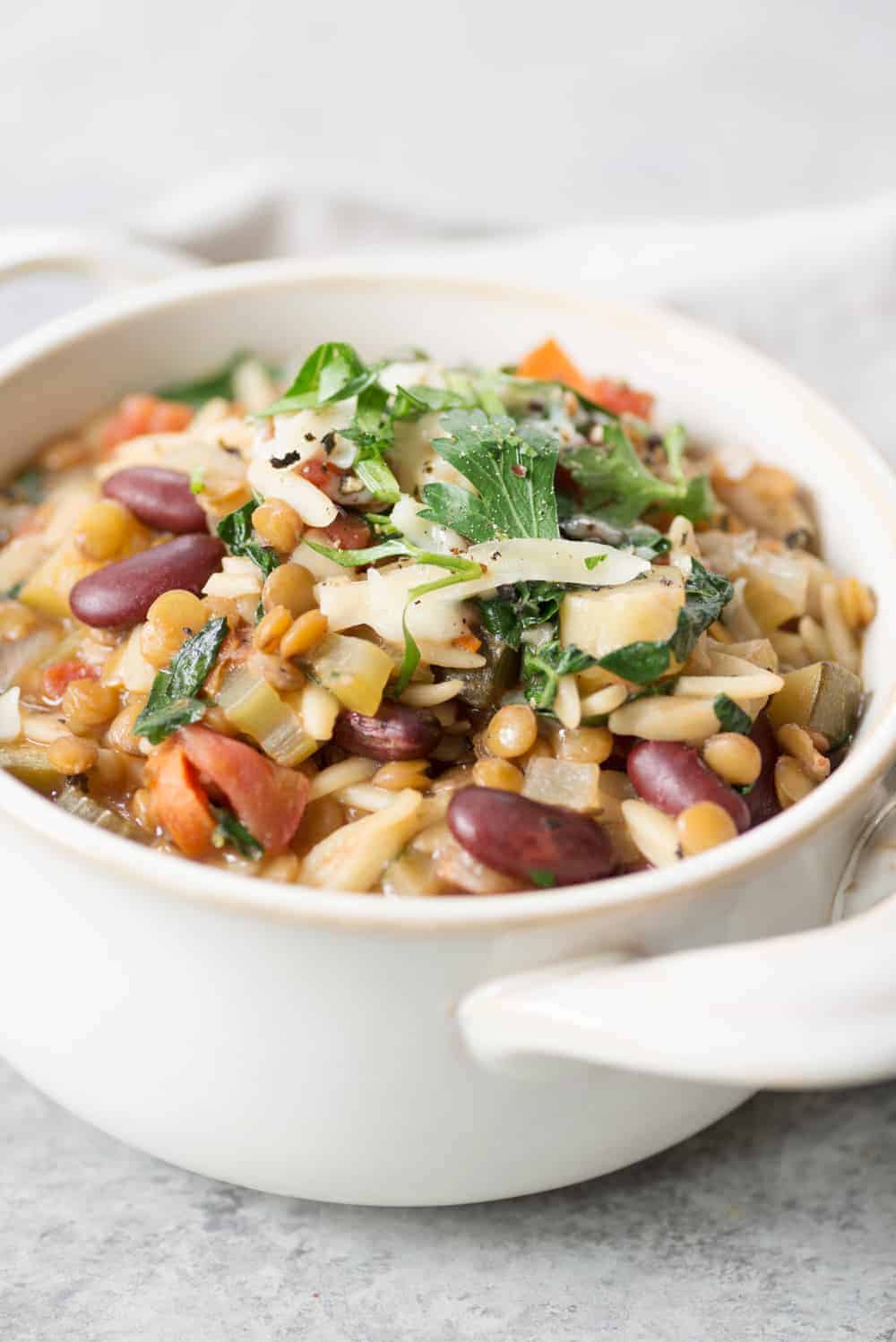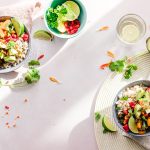Wondering what a plant-based diet looks like? There’s no one-size-fits-all answer, but here are some basics for where to start with a plant-based diet.
How to start a plant-based diet! Many people are adopting a mostly or totally plant-based diet. But what does that look like and where do you start? Understanding the basics of putting together a plant-based diet and how to navigate this new lifestyle will set you up for success. THIS RECIPE
What foods are on a plant-based diet?
A plant-based diet may also be called a vegan, vegetarian, or plant-forward diet, among others.
The truth is, it can have a lot of variations depending on the person – and that’s okay. For instance, my family subscribes to what I like to call a predominantly plant-based diet.
But the basic definition is that it’s a way of eating that minimizes, or excludes, animal products. More specifically, this refers to meat, poultry, fish, eggs, and dairy products like cow’s milk, cheese, butter, and ice cream.
Instead, the foundation of a plant-based diet is an array of whole plant foods.
There are a ton of vegan convenience foods available today, many of which are delicious time-savers for busy households. Let me be clear– I have no problem with these foods on occasion. I see so many individuals on social media demonize convenience foods, but the reality is that they are delicious and help many people eat less meat. I’ve been eating predominantly plant-based for over 15 years now and I celebrate all of the many progressions that the plant-based market has taken. The fact that I can get faux-pork gyoza at a supermarket in St. Louis feels like a really huge win!
I’m adamant that for a diet to be sustainable, it needs to be filled with pleasure. I love buddha bowls, salads and date-sweetened desserts as much as the next dietitian but I also like meatless burgers, coconut-based ice cream and chocolate.
For overall health, I do focus on minimally-processed plant foods as much as possible. This means fruits, vegetables, nuts, seeds, whole grains, and legumes (beans, peas, and lentils). This also includes items like tempeh, tofu and seitan. Eating this way most of the time leaves plenty of wiggle room for treat foods; or even some animal-based products in a predominantly plant-based approach.

5 tips for starting a plant-based diet
If you’re considering adopting a plant-based diet, here are some of my best practical tips to set yourself up for success. Many of these are still things I use today when I want to make tweaks to our routine!
1. Find your reason.
The first thing I recommend is figuring out your “why”.
What’s your biggest goal? Do you want to incorporate healthier foods into your diet?
Being clear about this driving reason is going to help make the switch sustainable for you.
2. Assess your starting point.
After that, it can be really helpful to get a visual of what your diet currently looks like.
Write out everything you ate over the last few days, if you can remember, or keep a food journal for the few days ahead of you.
This gives you a comprehensive look at current habits and food preferences, so that you can take the next step toward change.
3. Identify areas for realistic change.
Looking at your current diet, where can you go from here? Identifying a few places where you can swap out animal products for plant-based foods is a great first step.
It’s human nature to want to do a total lifestyle overhaul overnight, but for most people, this ends up being overwhelming, frustrating, and unrealistic. Instead, pick a few places to start and then add from there once you’re comfortable.
Maybe it’s replacing breakfast with vegan sourdough waffles or an overnight muesli, or trying out some vegan fish tacos with a side of fresh veggies and vegan queso dip for a weeknight dinner. A first step could be as simple as swapping out dairy milk products for plant-based alternatives.
If you need on-the-go or between-meal ideas, berry smoothies and energy snack balls are simple and packed with nutrition.
4. Collect recipes and inspiration.
If you’re not naturally inclined to cook from your own imagination, find some recipes to help!
Maybe it’s a new cookbook or spending an hour (okay, three) going down the Pinterest rabbit hole. Or, perhaps following a favorite recipe blog. If you’re not already subscribed to my email list, sign up and I’ll send you recipes every week! (PS- subscribers also get 40+ plant-based recipes for free in my protein course.)
Once you get the hang of using more plant foods in the kitchen, and find out what you like, and dislike, cooking plant-based meals will become second nature. I guarantee that you’ll even find your own unique ways to fine tune dishes, like switching out a seasoning to subtly change the flavors.
5. Stock your pantry.
It can be super helpful to keep your pantry well-stocked with shelf stable plant-based staple foods. I find this to be especially helpful on nights when I just don’t know what to make. You know the ones, where you go back and forth between the fridge and pantry for 20 minutes with a blank stare.
But with a variety of canned beans and lentils, pastas, and canned or frozen vegetables on hand, you can easily make a long list of healthy pantry meals that don’t require a ton of creativity or necessarily much prep.
And these staple items are so versatile in the kitchen. Did you know you can use lentils to make taco meat or canned chickpeas to make “chicken” salad sandwiches? One of my favorite parts of trying new plant-based recipes is seeing how much certain ones taste like their traditional animal-based counterparts.
Dry grains like quinoa and millet are easy to cook and can be used to make stuffed peppers or colorful grain bowls.

How to cook plant-based
Cooking plant-based foods can feel overwhelming if you’re not used to it. But often it just takes a small pivot from your current comfort zone to master plant-based cooking.
Something I recommend frequently is to try batch cooking. This is a practice of planning your week’s meals ahead of time. Then, figuring out how to repurpose some of the same ingredients for multiple meals.
For instance, preparing a batch of cashew cheese sauce you can use for casserole one night, roasted veggies the next, and as a taco dip on another.
Best of all, learning how to efficiently batch cook can save you a ton of time, effort, and money.
Over at Plant Based Juniors, Whitney and I recently created a Batch Cook Ebook that you may find helpful. It’s filled with 35+ recipes and tips for successful batch cooking with little ones.
And if you’re new to preparing plant foods, don’t sweat it.
Some of the easiest ways to cook fresh veggies are by roasting in the oven, sautéing in a skillet with a little olive oil and garlic, or steaming to soften. Of course, many veggies can be enjoyed raw or with a side of dip.
Beans, peas, and lentils are great sources of plant-based protein. These can be easily found canned or dried, depending on how much preparation you want to do.
Cooking plant-based can take a little practice to find out what works well and what you like (as with any new practice!). But I think you’ll find joy and satisfaction in doing it.
So that’s how to start a plant-based diet! If you’ve been wondering what a plant-based diet looks like, I hope you find these practical tips helpful. Once you’ve mastered the basics for where to start with a plant-based diet, I know it will be a piece of (vegan) cake.





